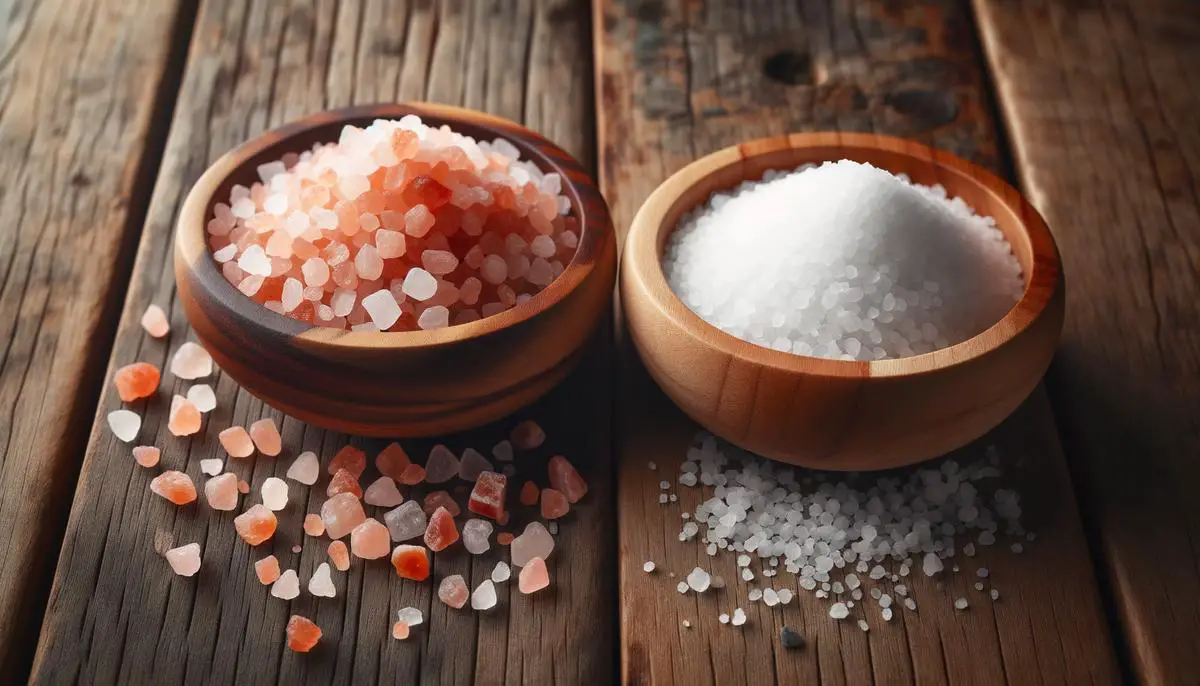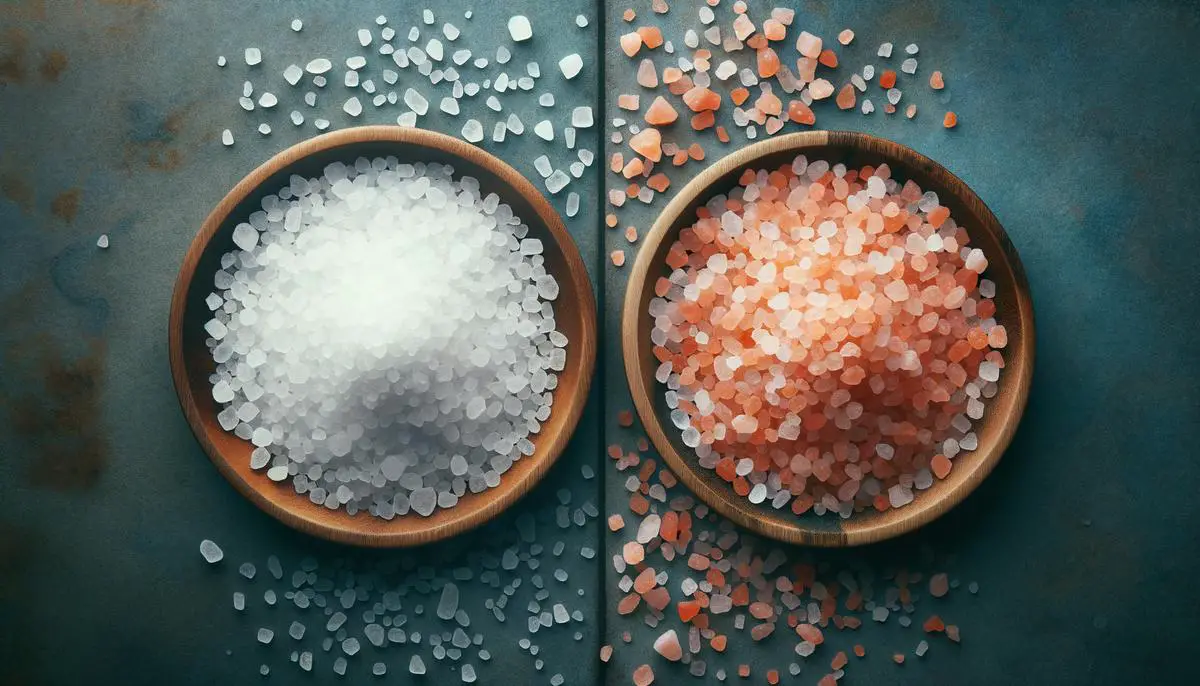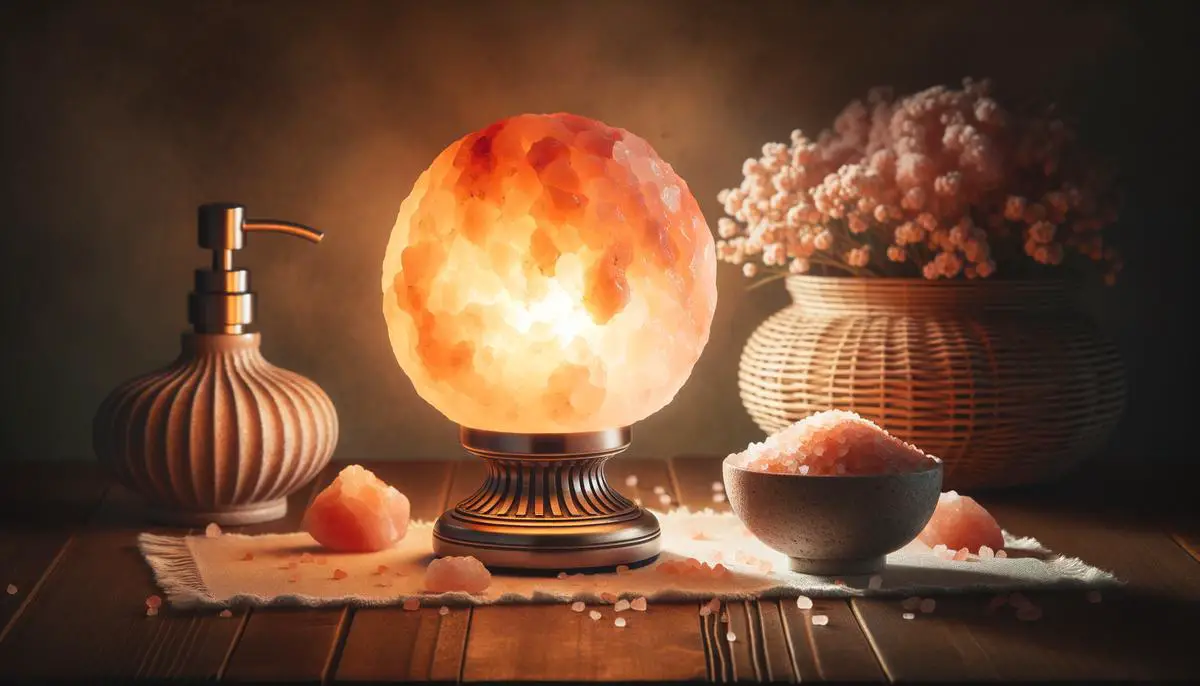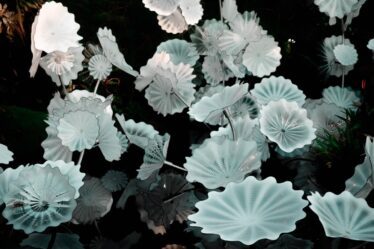
Nutritional Comparison
Himalayan pink salt and table salt share a common core of sodium chloride, but they have some notable differences. Himalayan pink salt contains about 98% sodium chloride, with the remaining 2% composed of trace minerals such as potassium, magnesium, and calcium, which give it its distinctive pink hue. Regular table salt, on the other hand, typically undergoes a refinement process that strips away most trace minerals and often includes additives to prevent clumping.
While the presence of trace minerals in Himalayan pink salt is often touted as beneficial, the exact health impacts of these minerals are minimal due to their small quantities. Consuming the amount needed to meet daily mineral requirements from this salt alone would far exceed healthy sodium intake levels.
It's crucial to note that both Himalayan pink salt and regular table salt contain roughly the same amount of sodium by weight. Medical guidelines suggest limiting sodium consumption to avoid high blood pressure and heart diseases.
One key difference is iodine content. Regular table salt often has iodine added, a necessary nutrient that helps prevent thyroid gland problems such as goiter. Himalayan pink salt naturally contains trace amounts of iodine, but not enough to meet typical dietary needs. This is especially significant in areas where other iodine sources are scarce.
Ultimately, the choice between Himalayan pink salt and table salt might hinge more on taste and aesthetic preferences than on significant nutritional benefits. Each type of salt holds its own unique properties and might suit different culinary applications, but the health differences are subtle. Be sure to consider your total dietary intake and specific health needs when deciding which might be better for your pantry.

Health Claims and Scientific Evidence
Various health claims have been attached to Himalayan pink salt, ranging from improved respiratory function and better hydration to enhanced detoxification. However, it's important to examine these claims with a critical eye.
Regarding respiratory health, some believe that using pink Himalayan salt can alleviate symptoms of conditions like asthma or chronic obstructive pulmonary disease (COPD). While small-scale studies and anecdotal reports surrounding the use of salt rooms (halotherapy) or salt lamps have generated interest, more thorough, large-scale studies are required to conclusively support claims of significant respiratory improvements solely from Himalayan pink salt.
As for hydration, the trace minerals in Himalayan pink salt are thought by some to help maintain essential electrolyte balance better than regular salt, potentially enhancing water retention and hydration. However, no credible studies have specifically demonstrated that Himalayan pink salt optimizes hydration more effectively than other salt forms. Proper hydration is typically achieved through regular intake of water and maintaining a balanced diet.
Detoxification is another area where enthusiasts claim Himalayan salt to shine, particularly through its use in salt lamps and bath salts. Yet, scientific support for these claims is limited. The process of detoxification in the human body is chiefly managed by the liver and kidneys, and there is no reliable evidence that pink Himalayan salt enhances this process substantially.
While Himalayan pink salt may be less processed and boast a more natural allure with negligible trace minerals, these differences do not transform it into a miracle cure or health elixir. Consistent medical advice remains clear on assessing holistic dietary habits and focusing on a variety of nutrients for health management.1
Culinary and Non-Dietary Uses
Himalayan pink salt isn't just a flavorful addition to meals; it also finds uses in salt lamps and bath salts. In culinary applications, this salt adds not just saltiness but a certain exotic allure to dishes. Its larger crystals provide a crunch and burst of flavor that is appreciated in finishing touches on foods like salads, steaks, and even desserts. With its coarse and fine grain options, it offers versatility. The visual appeal it lends to a dish with its striking pink color can undoubtedly elevate the presentation and potentially enhance the dining experience.
The tactile experience of using a Himalayan salt block is also notable. These dense blocks of pink salt can be heated to high temperatures and used to grill meats, seafood, and vegetables. As the food cooks, it subtly absorbs the salt, enriching the flavors without being overwhelmingly salty.
In non-dietary uses, Himalayan pink salt finds a unique niche:
- Salt Lamps: Crafted from large blocks of this salt, these lamps are decorative and are also attributed with benefits like air purification and mood enhancement due to the emission of negative ions when heated. While solid scientific backing for these claims might be limited, these lamps remain popular for their soothing ambient light and aesthetic qualities.
- Bath Salts: The usage of Himalayan pink salt in bath salts highlights its purported benefits for skincare. When dissolved in bath water, it's believed to create a rejuvenating, mineral-rich soak that helps to relax muscles and soften skin.
Whether used to season a dish, illuminated as a lamp, or dissolved in a bath, Himalayan pink salt transcends its basic function as a seasoning and enters the broader spectrum of holistic lifestyle choices, appreciated for its flavor and its purported benefits and diverse applicability.

In conclusion, while Himalayan pink salt offers a touch of aesthetic pleasure and minimal trace minerals, its health benefits are largely overstated. The key takeaway is to focus on a balanced diet where salt, whether pink or table, plays a part but is not relied upon as a significant source of minerals. Both types of salt can enhance our meals, but moderation and variety in our diet are paramount for optimal health.
- Farquhar WB, Edwards DG, Jurkovitz CT, Weintraub WS. Dietary sodium and health: more than just blood pressure. J Am Coll Cardiol. 2015;65(10):1042-1050.



